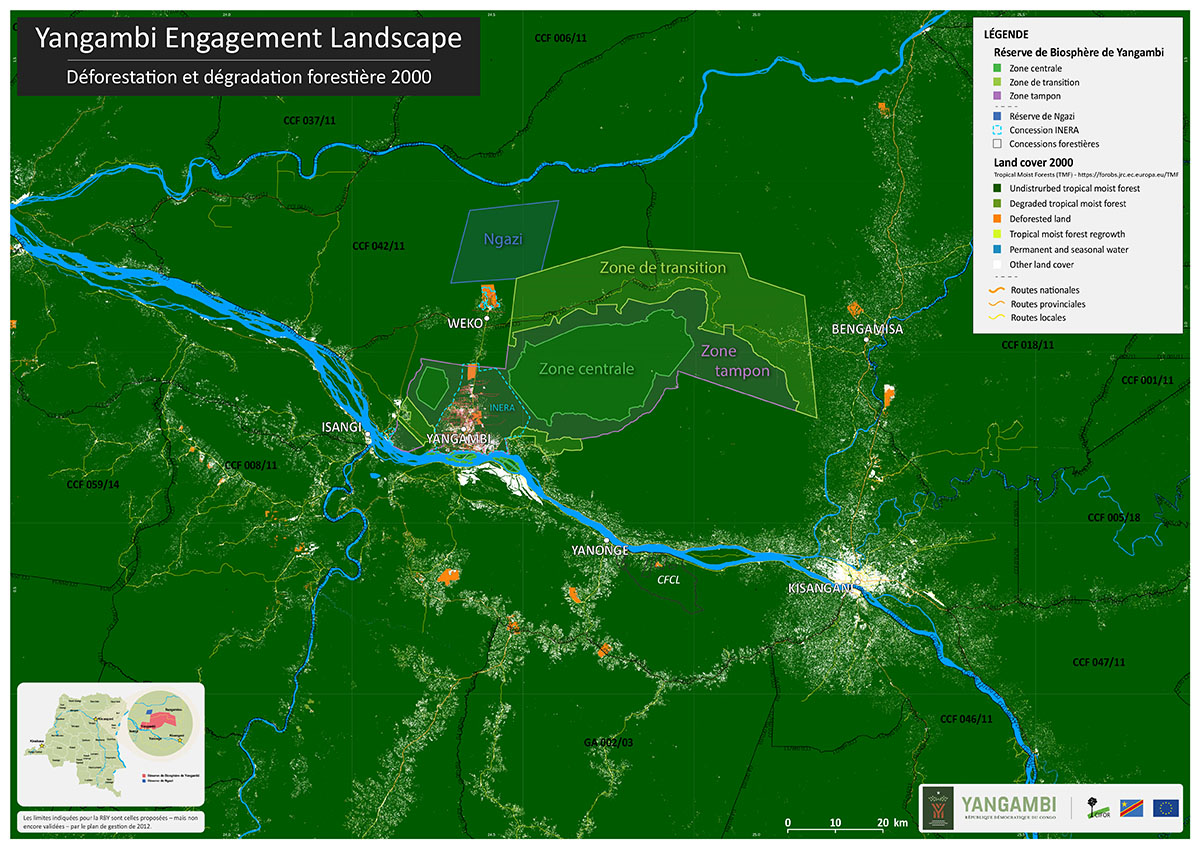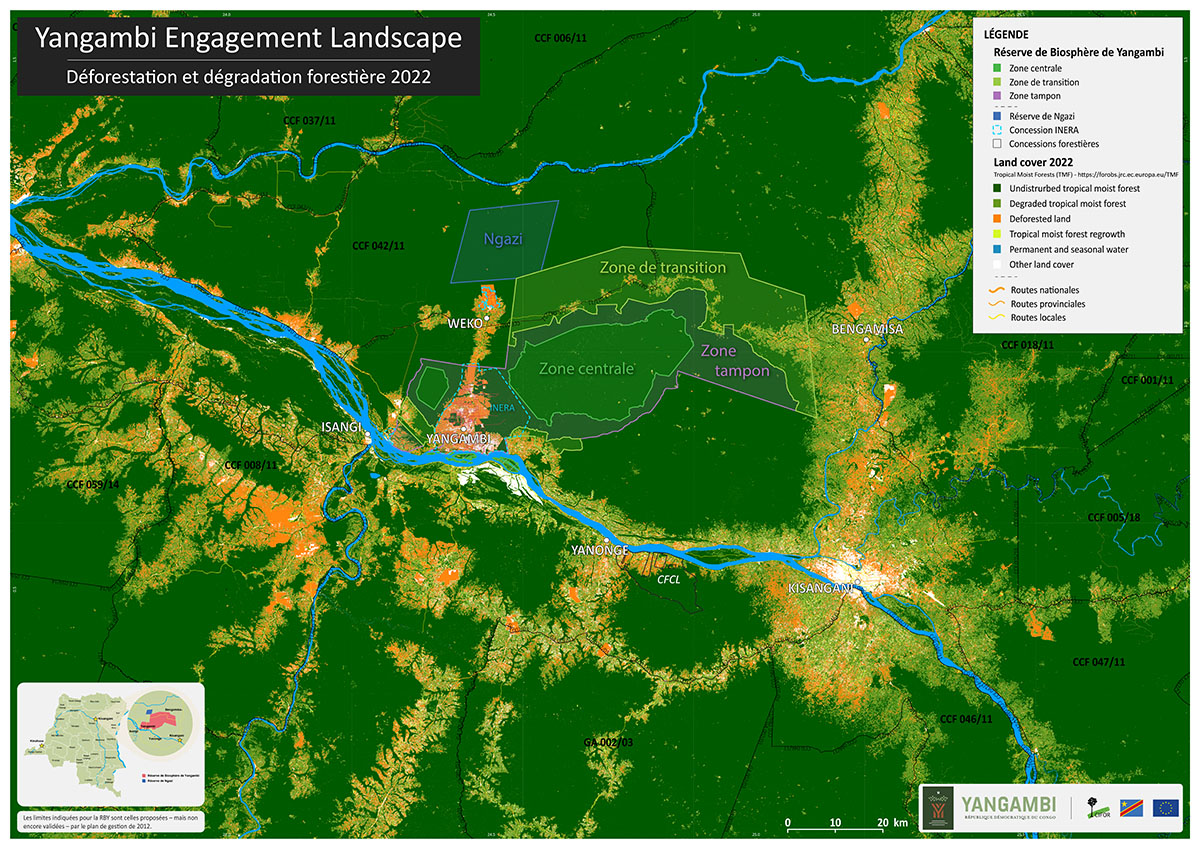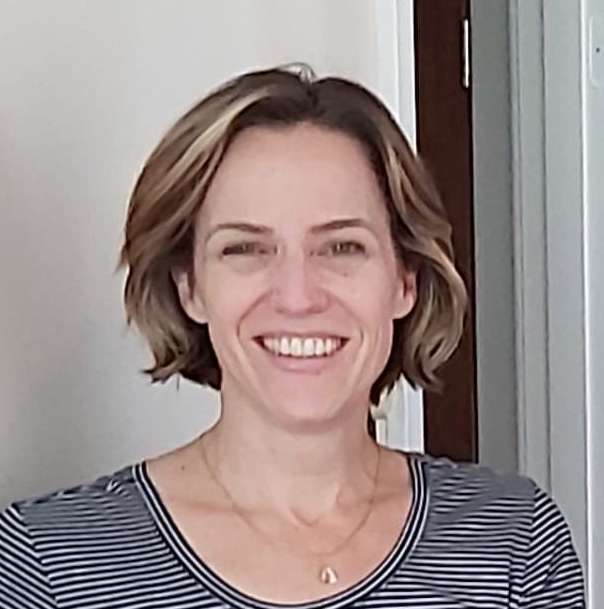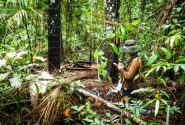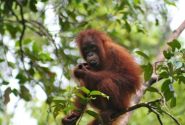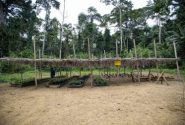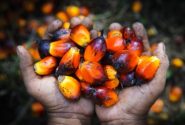We want you to share Forests News content, which is licensed under Creative Commons Attribution-NonCommercial-ShareAlike 4.0 International (CC BY-NC-SA 4.0). This means you are free to redistribute our material for non-commercial purposes. All we ask is that you give Forests News appropriate credit and link to the original Forests News content, indicate if changes were made, and distribute your contributions under the same Creative Commons license. You must notify Forests News if you repost, reprint or reuse our materials by contacting forestsnews@cifor-icraf.org.
Birdsong greets visitors to the Yangambi Engagement Landscape’s base camp, as bright green sunbirds dart between the branches of local fruit trees. Tomatoes, aubergines, beans and peppers grow in the small vegetable garden behind the main buildings, and the scent of ylang ylang rises up after a heavy rain.
“Seven years ago, this area was much more silent,” said Paolo Cerutti, referring to the 15-hectare plot that originally featured a tangle of brush and a cluster of palm trees planted in colonial times. A forester with the Center for International Forestry Research and World Agroforestry (CIFOR-ICRAF), Cerutti has been supporting the organization’s work in the Democratic Republic of the Congo’s Tshopo Province since 2017.
Just a few kilometres away from the UNESCO Yangambi Biosphere Reserve, the base camp’s offices, staff and visitor accommodations are now surrounded by agroforestry plots, fish ponds, tree nurseries and plantations – all buzzing with the activity of thousands of local people, who are testing new agroecological methods and planting fast-growing and indigenous trees.
What started 17 years ago as a capacity-strengthening project has evolved into an intricate web of activities co-designed with local communities to develop sustainable forest- and tree-based bioeconomies – in other words, an ‘engagement landscape’.
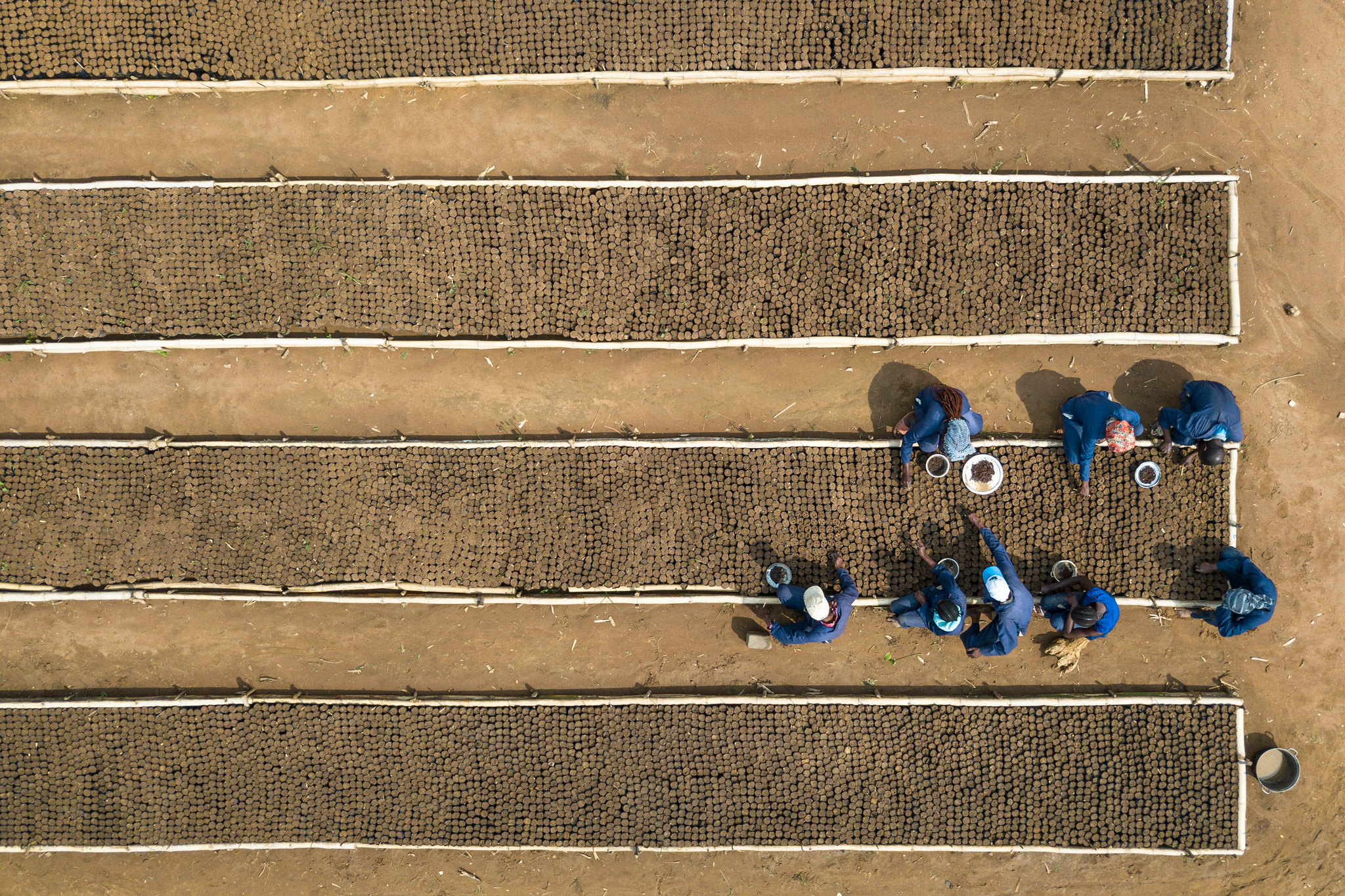
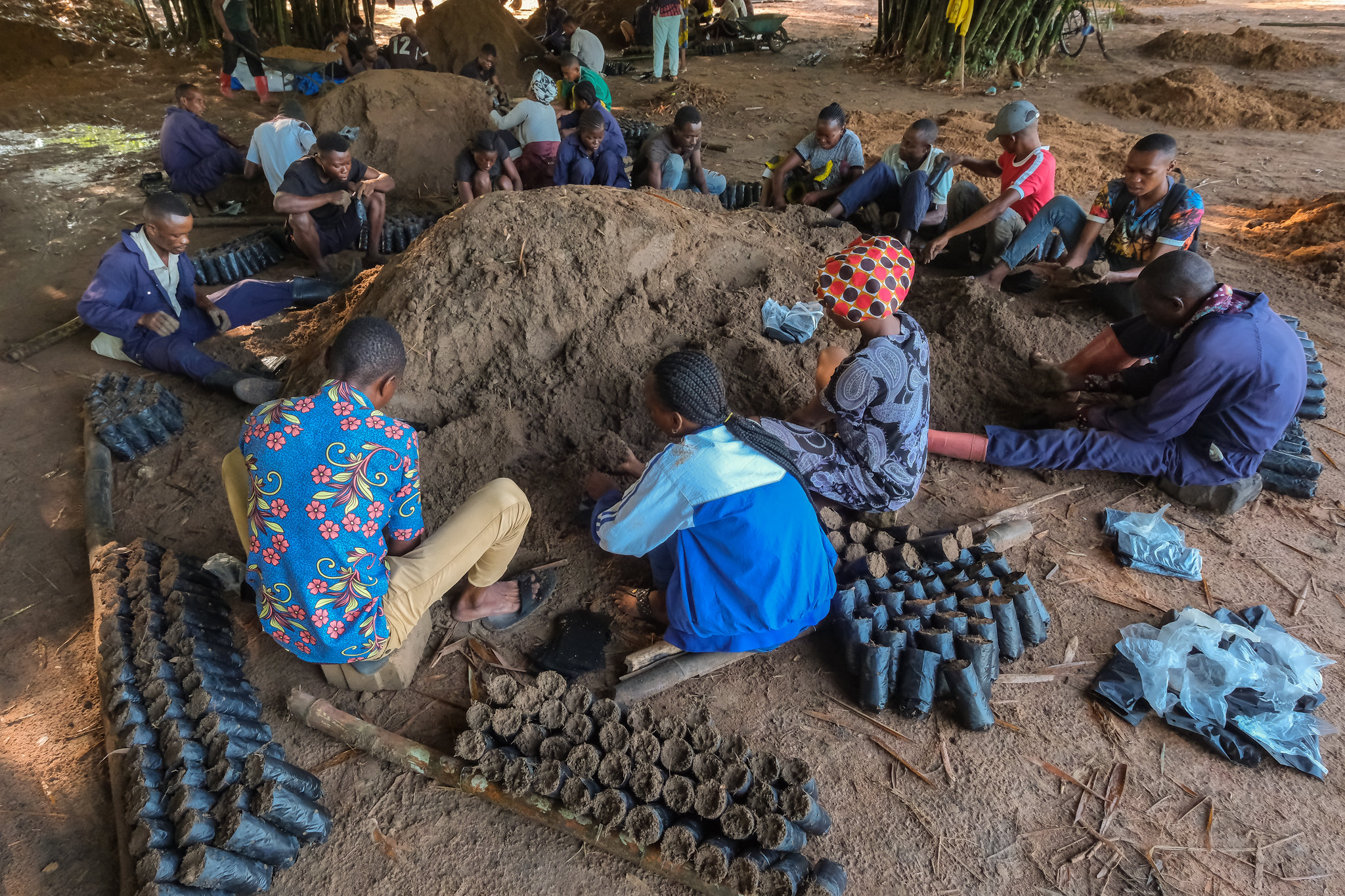
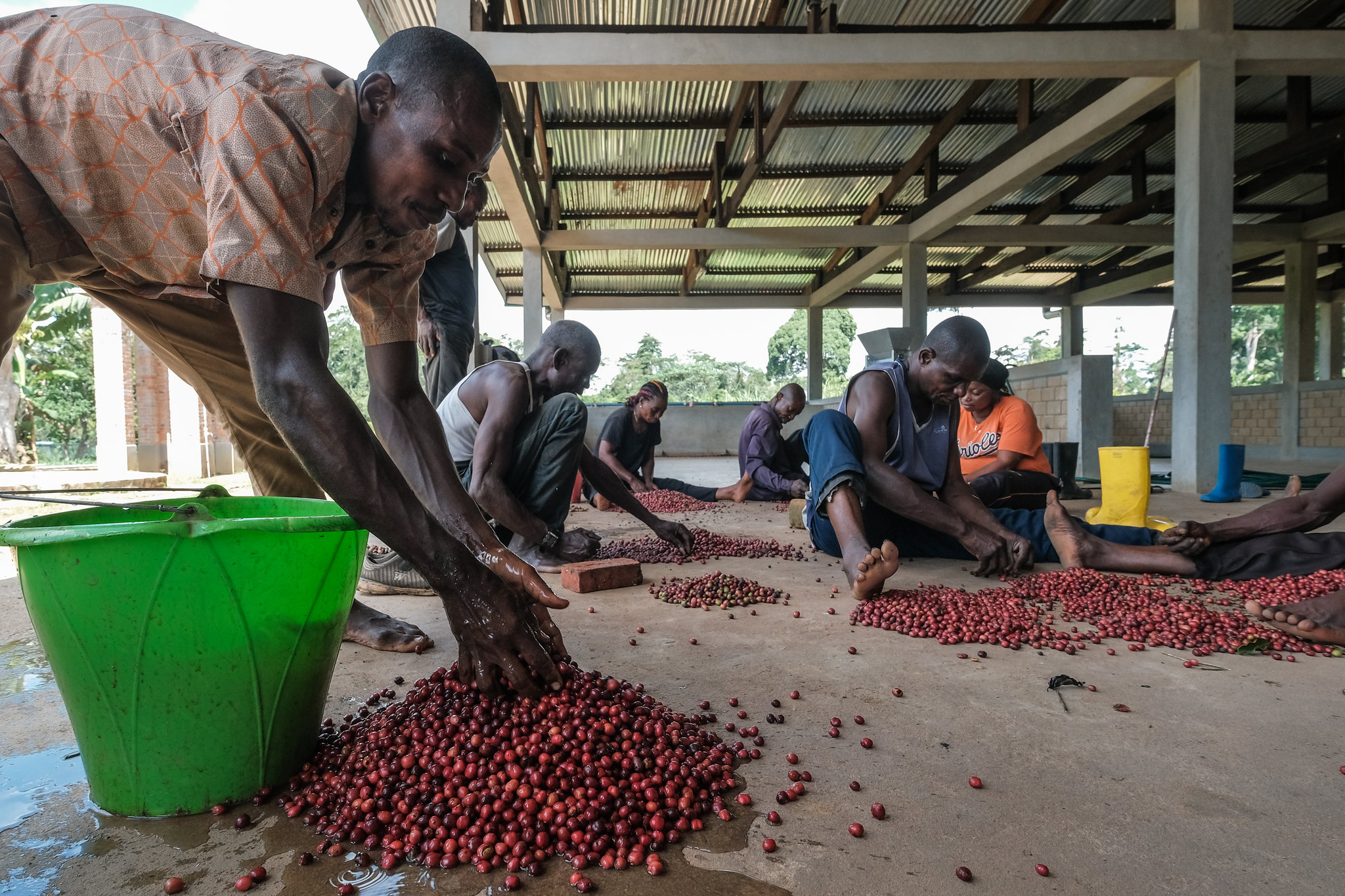
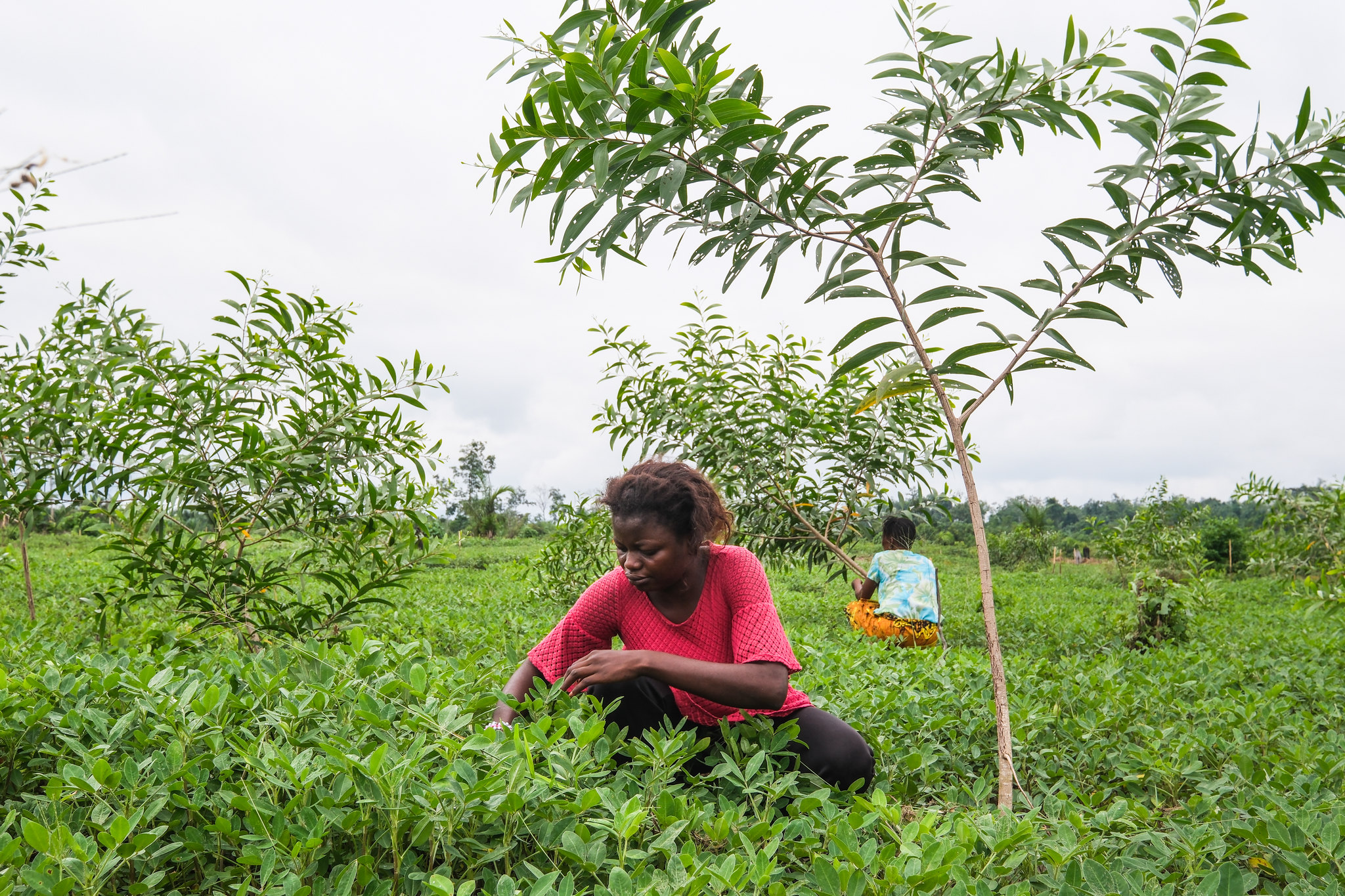
“Our goal – and that of our long-term partners in the landscape – is to work with people, who depend completely on the forest for woodfuel, food and farmland, and co-develop improved and innovative options,” said Cerutti. “These options are designed to not only enrich soils and preserve biodiversity, but also help develop the local economy through a sustained increase in the energy supply and financial options such as micro-credit or seed-capital to support small- and medium-sized enterprises.”
A genetic treasure, the forests and wildlife of the Yangambi Engagement Landscape are being depleted by swidden farming, hunting, and woodfuel extraction to meet the demands of a local population of 220,000 people. The markets of Kisangani, a city of 2 million, attract a continuous procession of dugout canoes carrying timber, agricultural produce, charcoal and wild meat from nearby villages along the Congo River. The programme is working with these communities to relaunch the local economy through the creation of green jobs and more sustainable value chains.
“The programme’s early activities tried to answer the question ‘what’s going on here?’ by assessing the social, economic, ecological and political environment,” explained Cerutti. “Initial activities sought to address the various drivers of forest and biodiversity loss: agriculture, woodfuel, timber and wild meat.”
The focus was initially set on people, areas and activities close to production sites, with the full-time engagement and regular presence of the support team acting in lieu of extension services. This led to the establishment of two pilot farms and a dozen demonstration plots, improved charcoal kilns and cookstoves, and training local hunters in wildlife monitoring and livestock rearing. The awareness, engagement and implementation model has since been expanded, adapted and improved many times over to cover transport, processing, value-addition and marketing to final consumers.
“To date, the most visible results are over 3 million fast-growing and indigenous trees planted on 3,600 hectares of degraded land restored through agroforestry plantations, and about 3,000 additional hectares planted with improved seeds, run by either the land’s customary owners or farmers with acquired rights to use it,” said Cerutti.
Established in 2018, the Yangambi Engagement Landscape’s pilot farms, demonstration fields, and Farmer Field Schools represent steps 1, 2 and 3 in a process that moves away from the lab and focuses on real-world conditions. By demonstrating and applying agroecological options that allow more and better food to be grown on the same amount of land, farmers can observe the effects of different tree-crop combinations and tree arrangements on yields and pest resistance. Based on what they see, they design their own plots with their chosen species.
“Choice is critical to our approach,” said Maxwell Ayiku Kubi, the coordinator of the agroecology team with the programme. “Many farmers come with preferences for certain crops or trees, and we provide the seeds they want while also sharing best agroecological practices. But when they see with their own eyes what else is possible on the same land, they get excited and want to try other options and combinations.”
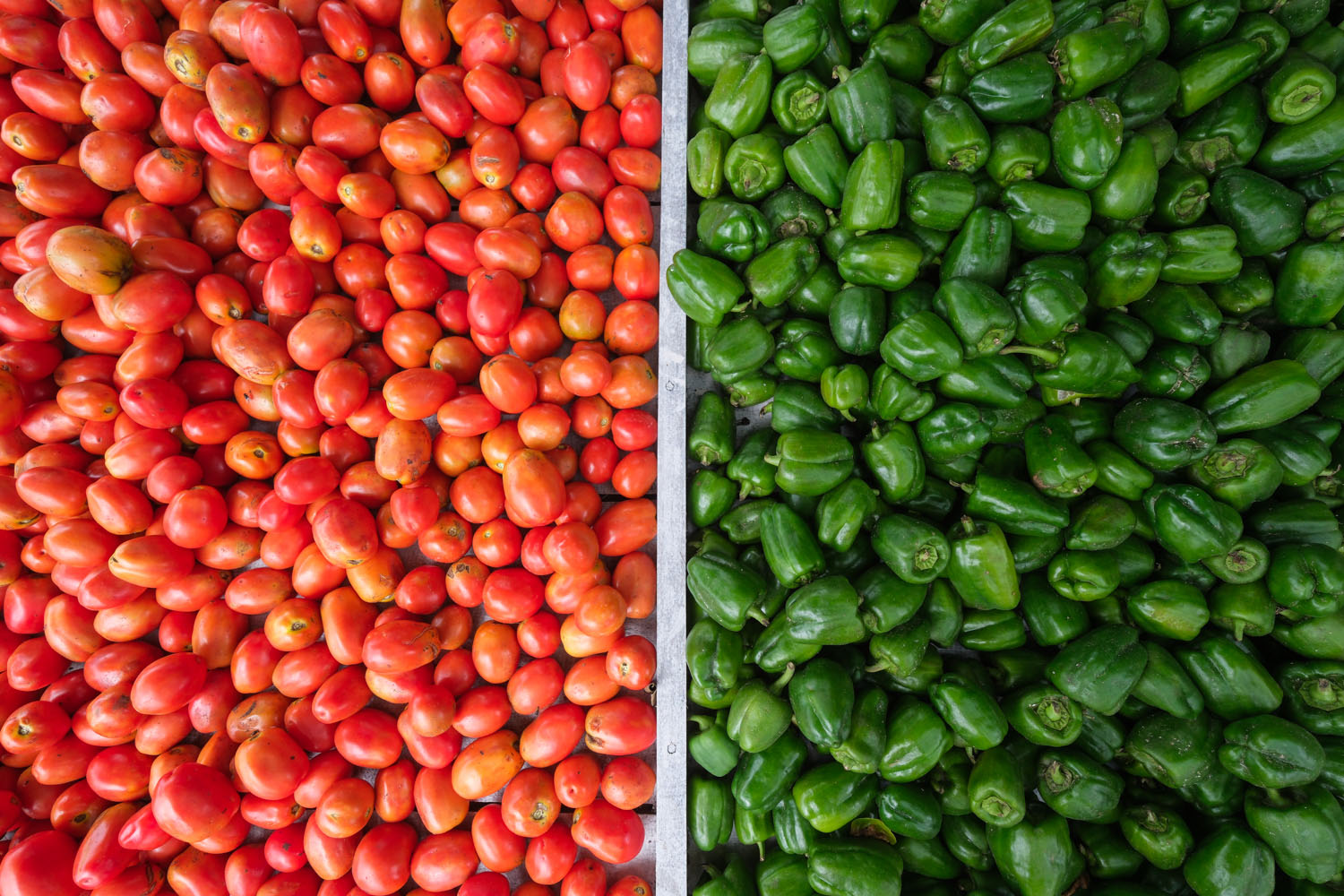
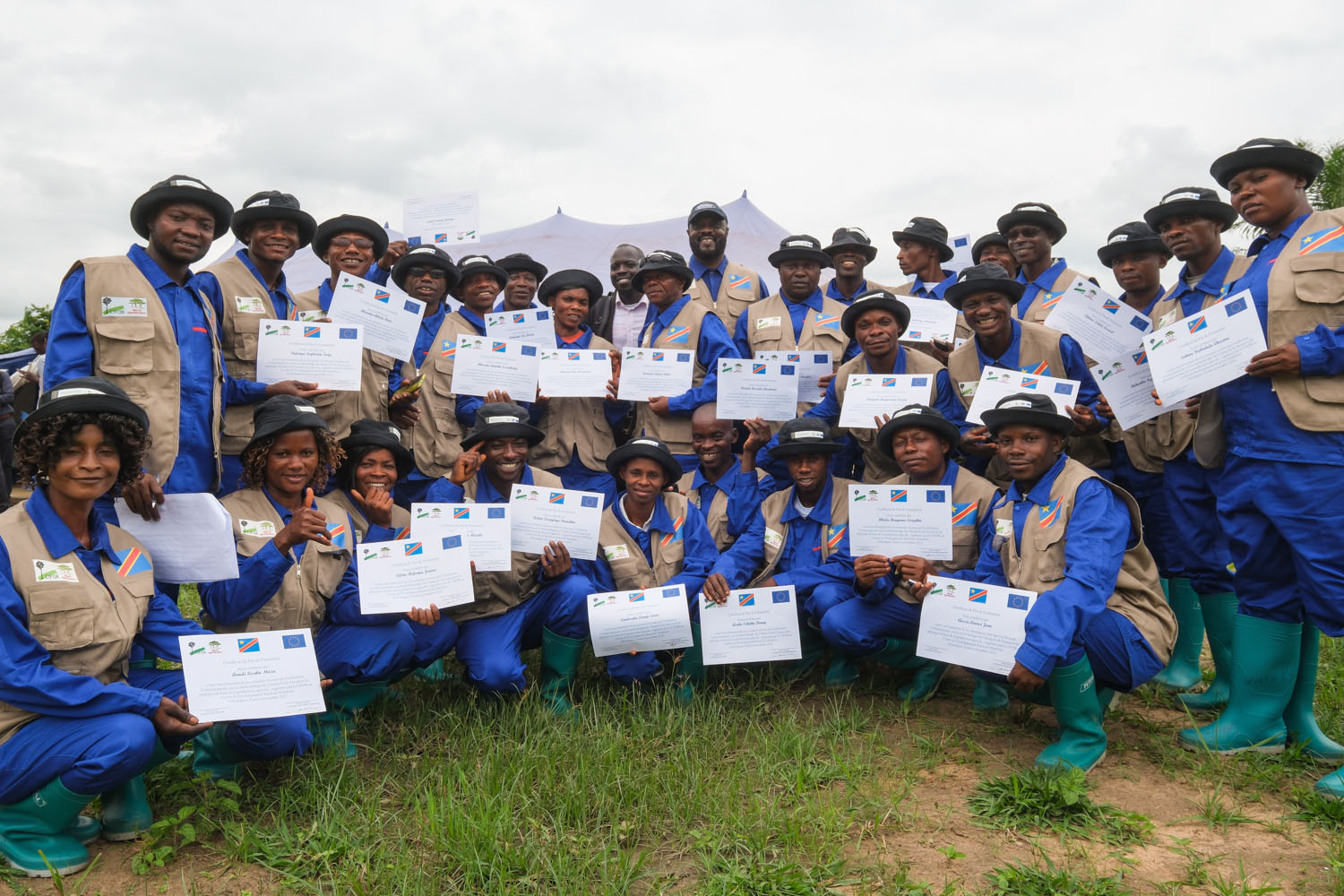

The first 30 graduates of the programme’s Farmer Field School (FFS) training-of-trainers course put proof to the concept, displaying a bumper crop of tomatoes, cabbage, peppers and corn at their closing ceremony in November 2023. Each graduate now oversees one FFS, training up to 30 local farmers in the selection of agroforestry/crop combinations, identification of plant pests and diseases, creation of appropriate biopesticides, and soil health and replenishment. Each FFS plot will evolve according to the demands of the community, as members select their preferred crops and learn hands-on which combinations yield the best results.
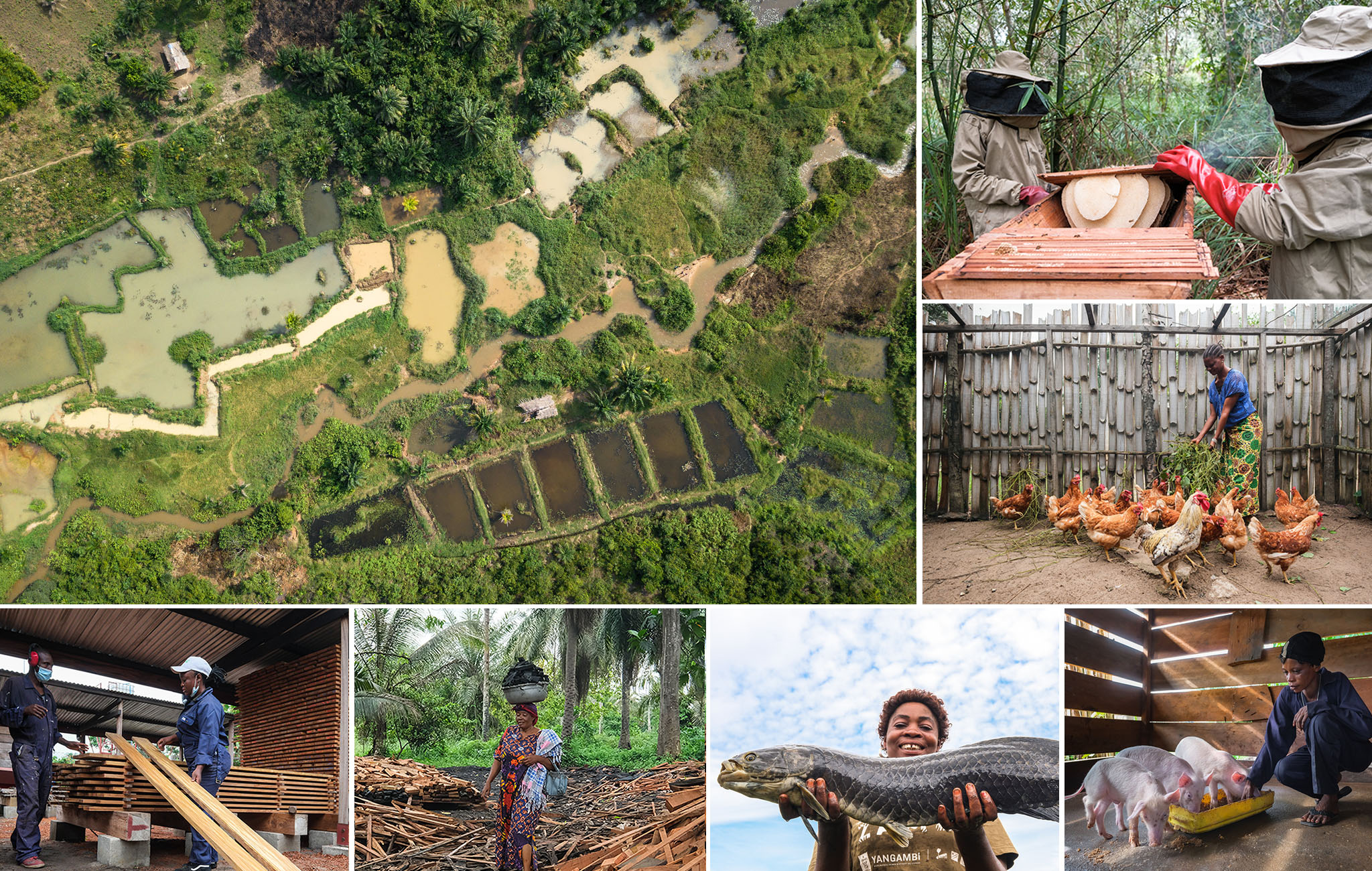
Agriculture is just one facet of a network of activities designed to engage people and foster local development while reducing deforestation and the loss of Yangambi’s rich biodiversity. The Yangambi Engagement Landscape is co-developing circular bioeconomies around the other pressure points of timber, charcoal and wildlife extraction. Through ad-hoc training and incubation, the programme is supporting the activities of over 1,500 individual entrepreneurs and members of various associations – many of them led by women – across charcoal, timber, fish, honey, wild meat and other value chains.
At the same time, the programme is raising awareness of the ecological importance of the landscape through behaviour-change campaigns (reaching around 12,000 people to date), journalist trainings, and environmental education programmes (reaching more than 5,000 children) that are starting to help renovate school buildings through income generated from school nurseries, agroforestry plots and fish farms.
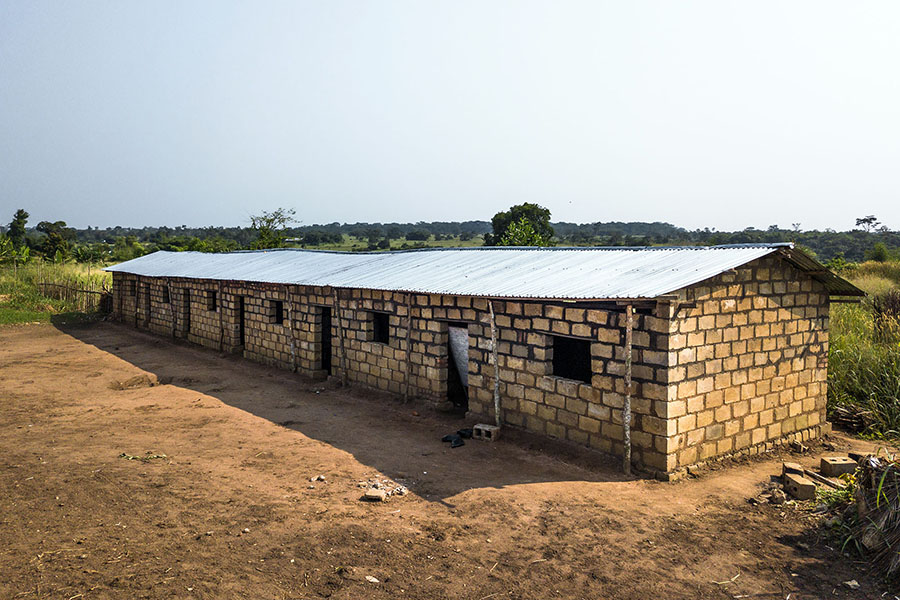
School built in Yangambi with the income of the nearby fish ponds, Tshopo Province – DRC.
The original aim to build capacity among the Congo’s foresters and ecologists remains: through an ongoing partnership with the University of Kisangani and the Institut National pour l’Etude et la Recherche Agronomique (INERA) the Yangambi Engagement Landscape has so far trained 270 Master’s and PhD in sustainable forest management.
The programme is also supporting the construction and rehabilitation of state-of-the-art low-carbon buildings at the University of Kisangani and INERA.
Finally, there are the critical issues of energy and finance. In a country where only 1% of the population has access to electricity and a landscape that consumes over 230,000 m3 of charcoal each year, the programme is developing a sustainable bioenergy value chain, with a combined heat and power plant now operational in the village of Yangambi that generates both thermal and electric energy from renewable biomass.
This, combined with solar micro-grids, the construction of a less flood-prone market area, and ad-hoc financial and incubation support, is strengthening the foundation of a green economy.
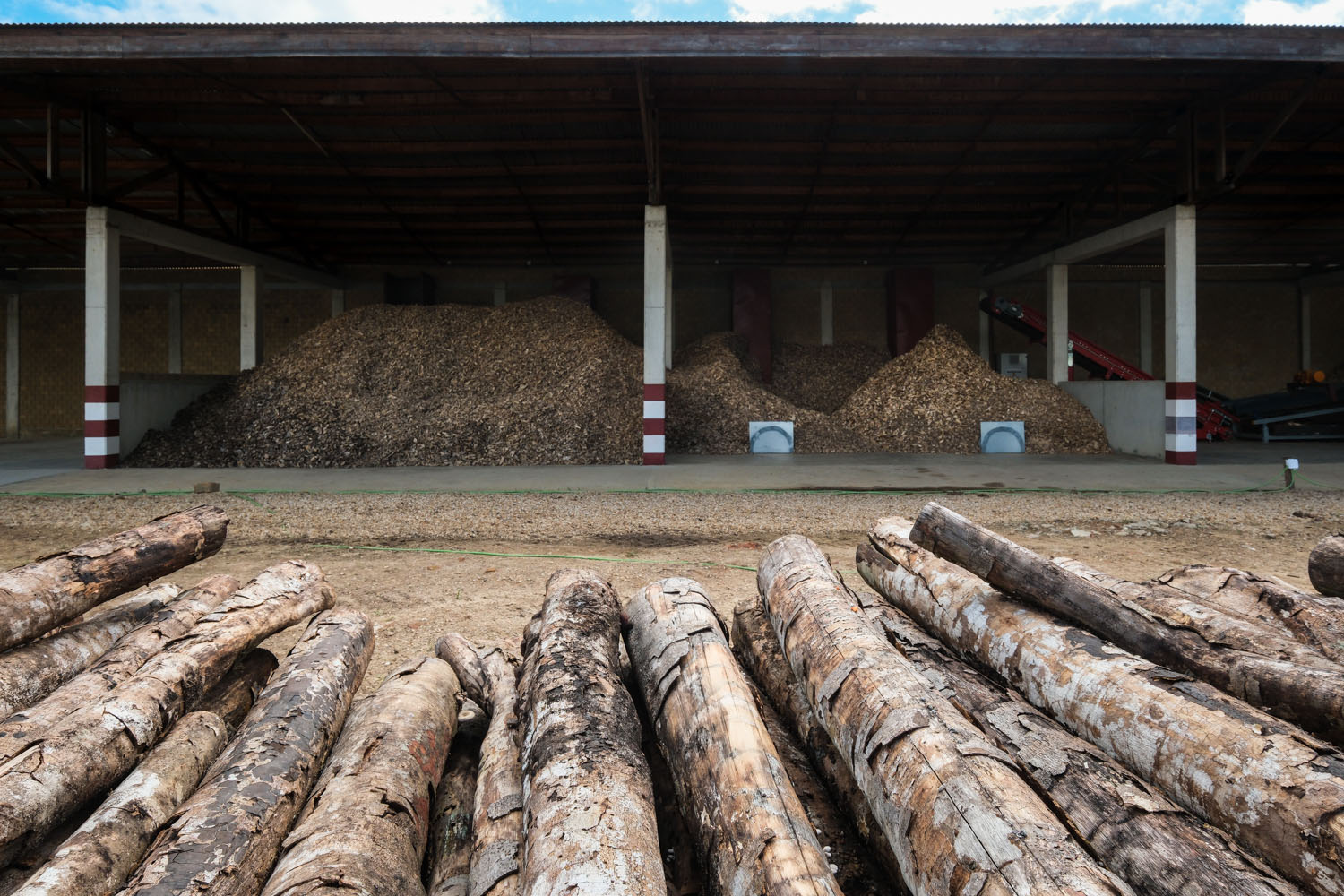
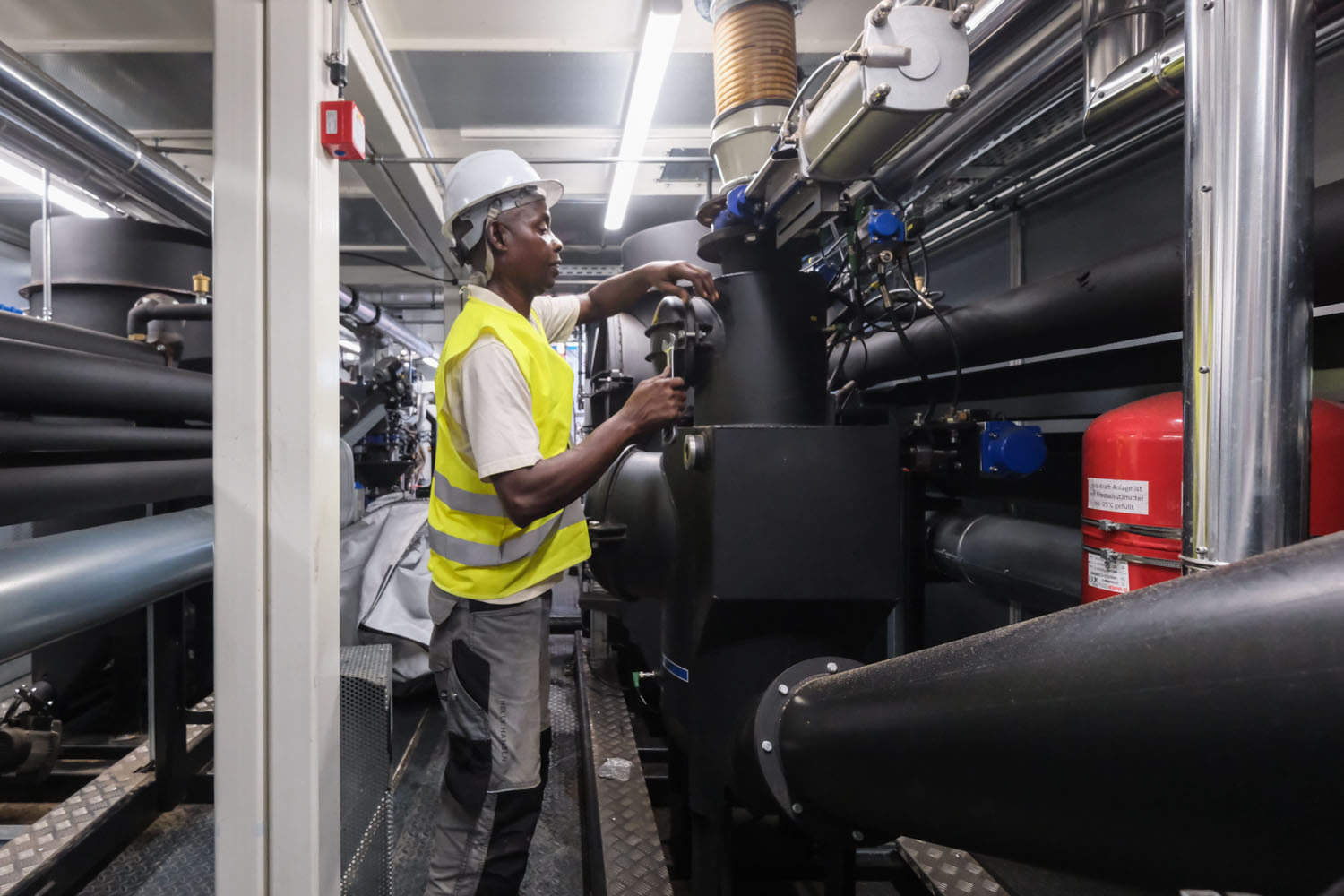
Maintaining a bird’s eye view of the landscape, so to speak, requires the Yangambi Engagement Landscape team to continuously balance their global vision with the ability to respond and adapt to local complexities as they arise.
‟The closer you get to the field, the messier it looks – hot, vibrant and complex. But I wouldn’t know how else to define the landscape approach in practice”, said Cerutti.
“The challenges are many – from a lack of infrastructure, to an absence of extension services, to legal systems unable to control major and minor obstacles to the interests of farmers and traders. It takes both long-term planning, flexibility, and solid partnerships to achieve the results we envision, not to mention the hard work of our brave team members. But when these results come – as they always do – the joy and pride of the team, farmers and partners spurs them to work even harder.”
The activities of the Yangambi Engagement Landscape are coordinated by the Center for International Forestry Research and World Agroforestry (CIFOR-ICRAF) in cooperation with international, national and local partners, with the financial support of the European Union, the Kingdom of Belgium, the United States Agency for International Development (USAID), Good Energies Foundation and others. cifor-icraf.org/yangambi-engagement-landscape
For more information, contact Paolo Cerutti (p.cerutti@cifor-icraf.org)
Story development: Erin O’Connell | Video production: Aris Sanjaya | Web design: Gusdiyanto | All photos and video by Axel Fassio
We want you to share Forests News content, which is licensed under Creative Commons Attribution-NonCommercial-ShareAlike 4.0 International (CC BY-NC-SA 4.0). This means you are free to redistribute our material for non-commercial purposes. All we ask is that you give Forests News appropriate credit and link to the original Forests News content, indicate if changes were made, and distribute your contributions under the same Creative Commons license. You must notify Forests News if you repost, reprint or reuse our materials by contacting forestsnews@cifor-icraf.org.
